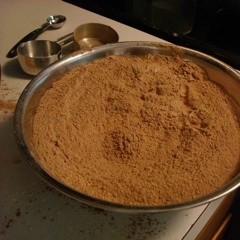Can you use baked goods to improve your sales process? While “letting them eat cake” did not work for Marie Antoinette, it may work for you. Michele Rochon, a business development and marketing professional in the engineering industry describes a fun exercise for instilling process into your selling program.This tasty and fun team-building exercise is especially for sellers in a complex environment requiring value added proposals. As an unconventional technique for establishing a process in an “ad hoc” business development environment, it involves a process launch session using a cake-baking competition as an analogy for sales strategy development.
Participants compare the steps of baking a cake to producing a winning solution. The comparison and competition enhance learning and the emotional experience increases learning retention. The entertainment value and participatory nature of the exercise supports the forming of consensus for a new sales process.
Taking a complex sales process from “ad hoc” to “repeatable and quality controlled” is sometimes said to be the most daunting step on the road to full optimization.
Process Revolution
The challenge lies largely in the cultural shift the seller’s organization must make. The effort is usually spearheaded by a minority and slowed by a majority that privately doubts its value. What if it were actually fun and created permanent, pleasant associations via the steps? What if it leveled the playing field for senior executives, sellers and support staff involved and empowered everyone?
Let them Eat Cake
Popular history records that Marie Antoinette made her mark by over-simplifying a complex problem, proving herself so insulated from the plight of the masses that she could not grasp the idea of their starvation.
Picture the Process Manager, or whatever role might be at the helm of organizational change in a growing corporation. This person is assailed daily with reality. People hate change. The new processes are unpopular, the paperwork dismissed as redundant. Passive aggressive behavior abounds. The road is long and uphill. This regent is painfully aware of the plight, perhaps too aware. What this needs is some over-simplification.
Solution Cake: A New Recipe
Send out a notice of a process launch session titled, “Solution Cake: A New Recipe.” Guard secrecy carefully. Ask participants to bring an apron, a notebook, and a sense of humor. On the boardroom table provide mixing bowls, whisks, spatulas, spoons and cake pans. Flour, sugar, eggs, butter, berries and chocolate can line the counter at the back wall.
Form the Teams
Break the group into teams. Select a group of 20 with 4 groups of 5; anything larger is unmanageable, anything smaller is not as textured with competitive spirit or a group atmosphere. Have teams identify a lead sales person, sales manager, pricing point person, executive, sales support support person or any other roles your organization might recognize as part of solution development.
Have participants choose a role that differs from the one they normally fulfill. This gives them the chance to experience the roles of other contributors. With the teams formed, draw attention to a series of prepared flip charts, the first of which is titled, “Form your Solution Team.” After forming solution cake teams, participants discuss the roles, tasks, decisions and tools that characterize their role in the early stages of the sales process. The facilitator records the group’s comments on the flip charts. This participatory technique can help create consensus for change in the early stages when it really counts.
Interview the Judges (um…Customers)
The cake judges are also known as the deal evaluators. The judges should be briefed beforehand regarding how a customer might evaluate a proposal and asked to evaluate cakes similarly. They should come ready with evaluation criteria to save time.
Cakes may be judged on flavor and presentation. Teams can be judged on teamwork, role fulfillment and cleanliness or efficiency of their operation. The judge interview should model a customer interview. The challenge for the teams becomes making the best use of the time (which should be limited) with each judge and asking the questions that will obtain the right information about the judges’ tastes in cake and other criteria.
Then discuss and record critical success factors for an effective customer interview process on the flip chart.
Choose a Recipe
The groups choose their cake recipe. Allow flexibility in this step so teams can experience the many layers of group decision-making. You can provide some recipes and the ingredients for them, but you can also give them the option of finding other recipes to spice up the decision process.
Inspire Strategy
Do not allow any teams to use the same recipe. This restriction will encourage strategic thinking, which is the beauty of the exercise. Judges can be encouraged to assert their own tastes in the process so the choice of recipe is inspired by the interview process and becomes a split-second decision requiring strategy. This demonstrates the importance of understanding customer needs and shows how acting strategically can be urgent.
This may turn out to be the first breakthrough moment when teams relate cake-baking to their sales process.
Stay tuned for the next installment…and you’ll agree “letting them (make) cake could be the most memorable training exercise you’ve ever run!
Keep up-to-date with Fast Track Tools by subscribing to our blog, via Twitter @fasttracktools and join our Facebook community!
picture by snarky_momma

Pingback: Sales process for the starving masses, part 2 | Fast Track Tools by Ken Revenaugh